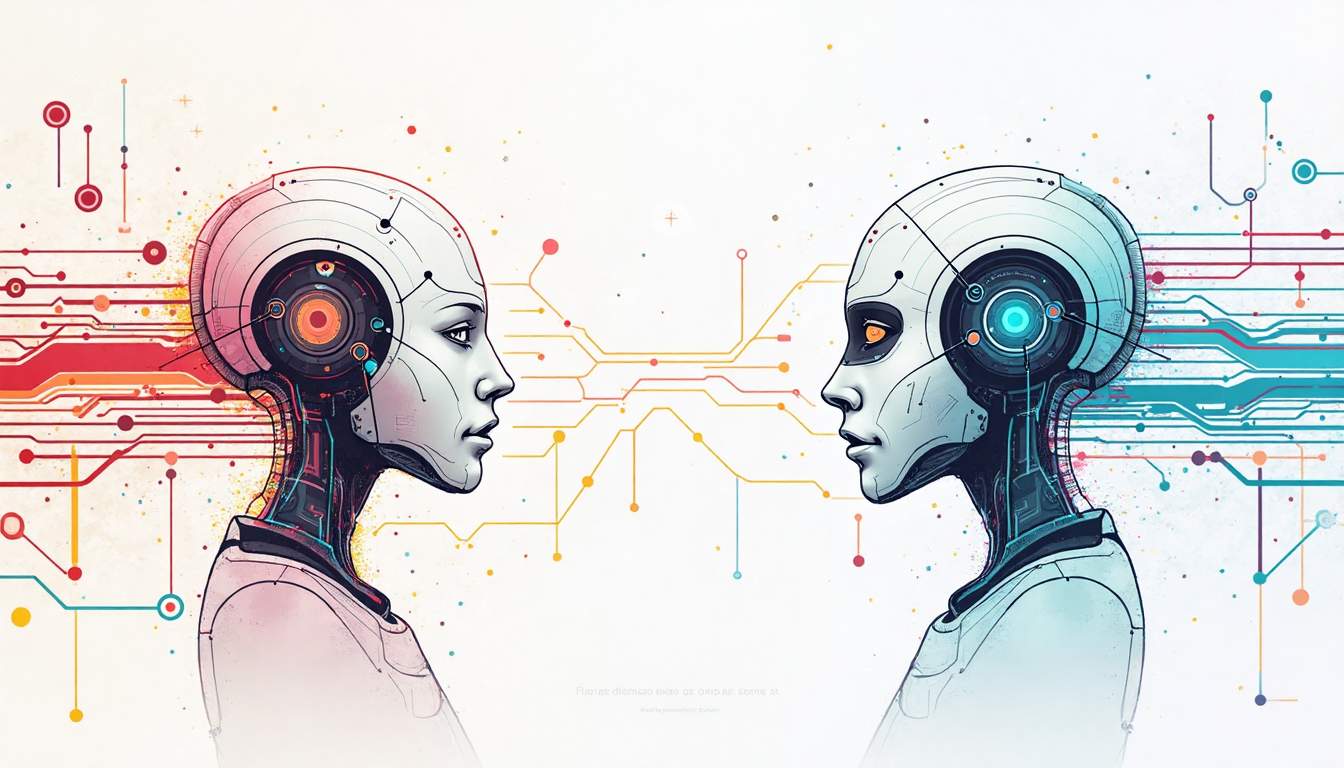CrewAI Best Practices: Building Robust Multi-Agent Systems
In the rapidly evolving landscape of artificial intelligence, multi-agent systems have become a cornerstone for creating sophisticated, scalable, and intelligent applications. CrewAI, a powerful framework for orchestrating multiple AI agents, enables developers to build systems where agents collaborate, compete, and learn from each other to solve complex problems. However, designing and maintaining robust multi-agent systems requires adherence to best practices that ensure reliability, efficiency, and security.
This article explores essential best practices for building robust multi-agent systems using CrewAI. From architecture design principles to maintenance procedures, each section offers actionable insights to help developers create resilient and high-performing AI ecosystems.
Architecture Design Principles
The foundation of any successful multi-agent system lies in its architecture. Designing a scalable and flexible architecture is critical to accommodate the dynamic interactions between agents and the evolving requirements of the application.
One fundamental principle is modularity. By decomposing the system into distinct, loosely coupled modules, each responsible for specific functionalities, developers can simplify complexity and enhance maintainability. For instance, separating communication protocols from decision-making logic allows teams to update or replace components without disrupting the entire system. This modular approach not only facilitates easier debugging and testing but also encourages code reuse, which can significantly speed up the development process. Furthermore, as new technologies emerge or requirements shift, modular designs allow for the seamless integration of new capabilities without a complete system overhaul.
Another key aspect is the adoption of a layered architecture. Typically, this includes layers for agent management, communication, task allocation, and data processing. This stratification helps in isolating concerns and optimizing performance at each level. For example, the communication layer can be optimized for low-latency message passing, while the task allocation layer focuses on efficient workload distribution among agents. Additionally, this layered approach can enhance security, as sensitive data can be encapsulated within specific layers, limiting exposure to only those components that require access. Each layer can also implement its own set of protocols and standards, ensuring that the system remains robust and adaptable to future changes.
Scalability should also be a core consideration. Multi-agent systems often need to handle increasing numbers of agents or tasks without degradation in performance. Employing distributed architectures, such as microservices or cloud-based deployments, can enable horizontal scaling and fault tolerance. CrewAI’s support for distributed agent orchestration makes it easier to implement such scalable designs. Moreover, leveraging containerization technologies like Docker can further enhance deployment flexibility, allowing teams to manage dependencies and configurations more effectively. This ensures that as the system grows, it can maintain high availability and responsiveness, even under heavy loads. Additionally, implementing load balancers can help distribute incoming requests evenly across agents, preventing any single point of failure and ensuring a smooth user experience.
Code Organization
Clean and well-organized code is vital for the long-term success of multi-agent systems. Given the complexity of interactions and the potential for rapid iteration, maintaining clarity and consistency in the codebase reduces bugs and accelerates development.
A recommended approach is to adopt a clear directory structure that reflects the system’s modular architecture. For example, separate folders for agent behaviors, communication protocols, utilities, and configuration files help developers quickly locate and update relevant code segments. This organization not only aids in navigation but also facilitates onboarding new team members, who can more readily understand the system's layout and logic. Furthermore, including documentation within each directory can provide immediate context and guidance, enhancing the overall accessibility of the codebase.
Implementing design patterns such as the Observer pattern for event handling or the Strategy pattern for agent decision-making can also improve code readability and reusability. These patterns encapsulate common behaviors and promote consistency across different agents. By using design patterns, developers can avoid reinventing the wheel, allowing them to focus on the unique aspects of their agents. Moreover, adopting a consistent naming convention for classes and methods aligned with these patterns can further clarify their purpose and functionality, making the code easier to navigate and maintain.
Additionally, leveraging version control systems like Git with well-defined branching strategies ensures that multiple developers can collaborate effectively without conflicts. Using meaningful commit messages and pull request reviews further enhances code quality and traceability. Establishing a code review process not only helps catch potential issues early but also promotes knowledge sharing among team members. Regularly scheduled code review sessions can encourage discussions about best practices and innovative solutions, fostering a culture of continuous improvement within the development team.
Testing Strategies
Testing multi-agent systems presents unique challenges due to the complexity of agent interactions and the nondeterministic nature of their behavior. Nonetheless, rigorous testing is indispensable to guarantee system robustness and reliability.
Unit testing remains the foundation, focusing on individual agent functionalities and utility functions. Mocking dependencies and simulating agent inputs can help isolate components and verify their correctness.
Integration testing is equally important to validate the interactions between agents and system modules. Automated test suites that simulate typical and edge-case scenarios can uncover issues related to communication, synchronization, and task coordination.
Moreover, stress testing the system under high load conditions reveals performance bottlenecks and potential failure points. For example, simulating hundreds or thousands of agents operating concurrently can help identify scalability limits and guide optimization efforts.
Finally, incorporating continuous integration (CI) pipelines with automated testing ensures that new code changes do not introduce regressions. This practice fosters rapid development cycles while maintaining system integrity.
Documentation Standards
Comprehensive and up-to-date documentation is a cornerstone of maintainable multi-agent systems. It facilitates onboarding new team members, supports debugging, and serves as a reference for future enhancements.
Effective documentation should cover multiple dimensions: system architecture, agent behaviors, communication protocols, configuration options, and deployment procedures. Using standardized formats such as Markdown or reStructuredText enables easy integration with documentation generators and version control.
Inline code comments are equally important, especially in complex algorithms or non-obvious logic sections. Clear comments help developers understand the rationale behind implementation choices and reduce the learning curve.
Additionally, maintaining a changelog and release notes provides transparency about system evolution and helps coordinate updates across teams. For distributed multi-agent systems, documenting inter-agent contracts and message schemas is crucial to prevent integration errors.
Performance Guidelines
Performance optimization in multi-agent systems involves balancing computational efficiency, communication overhead, and responsiveness. Poorly optimized systems can suffer from latency, resource exhaustion, or inconsistent behavior.
One effective strategy is to minimize unnecessary communication between agents. Employing event-driven messaging and filtering irrelevant data reduces network traffic and processing load. For example, agents can subscribe only to events pertinent to their roles rather than broadcasting messages indiscriminately.
Profiling tools should be used regularly to identify hotspots in CPU usage, memory consumption, and message latency. CrewAI provides built-in monitoring capabilities that help track agent performance metrics in real time, enabling proactive tuning.
Load balancing is another critical aspect. Distributing tasks evenly among agents prevents bottlenecks and ensures efficient resource utilization. Dynamic task allocation algorithms that consider agent capabilities and current workloads can significantly enhance throughput.
Finally, caching frequently accessed data and optimizing algorithms for common operations can reduce computational overhead. For instance, using approximate methods or heuristics in decision-making can speed up processing without sacrificing accuracy significantly.
Security Practices
Security is paramount in multi-agent systems, especially when agents operate in distributed or cloud environments where data privacy and integrity are at risk. Implementing robust security measures protects the system from malicious attacks and unauthorized access.
Authentication and authorization mechanisms should be enforced at every communication point. Agents must verify the identity of their peers before exchanging sensitive information. Role-based access control (RBAC) can restrict agent capabilities according to their functions.
Data encryption in transit and at rest safeguards against eavesdropping and tampering. Utilizing industry-standard protocols such as TLS for communication channels and AES for stored data ensures strong protection.
Regular security audits and vulnerability assessments help identify potential weaknesses. Incorporating automated security testing into the CI pipeline can detect common issues like injection flaws or misconfigurations early in development.
Moreover, designing agents with fail-safe behaviors in case of detected security breaches prevents cascading failures. For example, agents can isolate compromised peers or trigger alerts to system administrators.
Maintenance Procedures
Effective maintenance is essential to sustain the health and performance of multi-agent systems over time. Given the complexity and dynamic nature of such systems, proactive and structured maintenance practices reduce downtime and technical debt.
Routine monitoring of system metrics, logs, and agent statuses enables early detection of anomalies or degradations. Automated alerting systems can notify operators about critical issues before they escalate.
Regular updates to agent software and dependencies address bugs, security patches, and feature enhancements. Employing blue-green deployment strategies or canary releases minimizes disruption during updates by gradually rolling out changes and allowing quick rollback if needed.
Documentation should be continuously updated to reflect system changes, ensuring that maintenance teams have accurate references. Additionally, maintaining a knowledge base of common issues and troubleshooting steps accelerates problem resolution.
Finally, fostering a culture of collaboration between developers, operators, and stakeholders ensures that maintenance activities align with evolving business needs and technological advancements.
Building robust multi-agent systems with CrewAI demands a comprehensive approach that integrates sound architectural design, disciplined coding practices, thorough testing, clear documentation, performance tuning, stringent security, and diligent maintenance. By following these best practices, organizations can harness the full potential of multi-agent AI to create intelligent, scalable, and resilient applications that meet the challenges of today and tomorrow.






